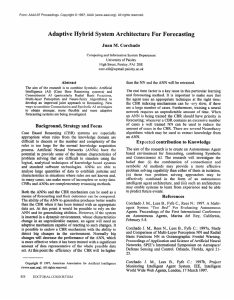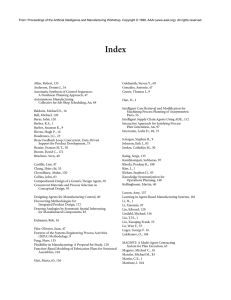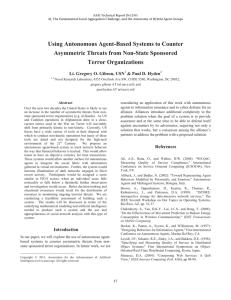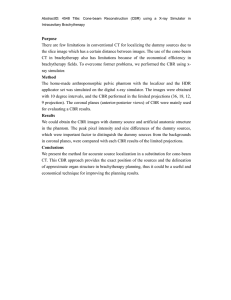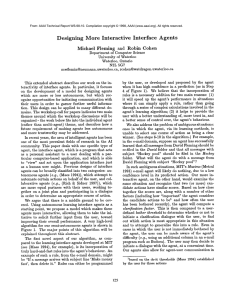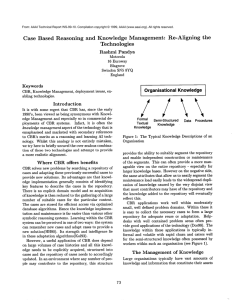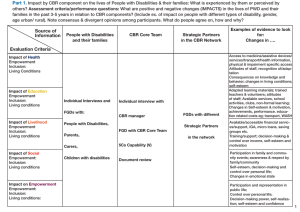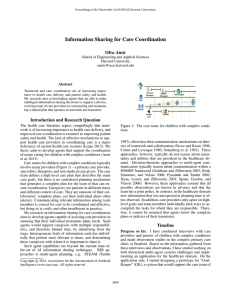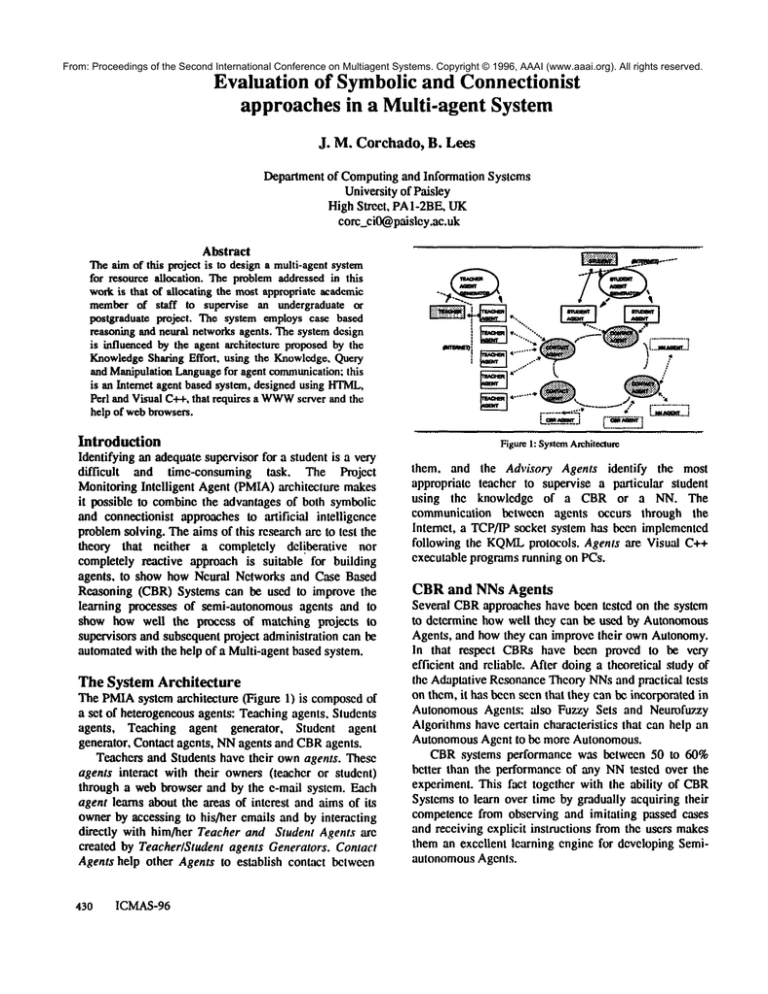
From: Proceedings of the Second International Conference on Multiagent Systems. Copyright © 1996, AAAI (www.aaai.org). All rights reserved.
Evaluation of Symbolic and Connectionist
approaches in a Multi-agent System
J. M. Corchado,
B. Lees
Department of Computingand Information Systems
University of Paisley
High Street, PA1-2BE, UK
corc_.ci0@paisley.ac.uk
Abstract
Theaimof this project is to design a multi-agentsystem
for resource allocation. The problemaddressed in this
workis that of allocating the mostappropriate academic
memberof staff to supervise an undergraduate or
postgraduate project. The system employscase based
reasoning and neural networksagents. The systemdesign
is influenced by the agent architecture proposedby the
KnowledgeSharing Effort, using the Knowledge,Query
and ManipulationLanguagefor agent communication,
this
is an Internet agent based system, designed using HTML,
Perl and Visual C++,that requires a WWW
server and the
help of webbrowsers.
Introduction
Identifying an adequate supervisor for a student is a very
difficult
and time-consuming task. The Project
Monitoring Intelligent Agent (PMIA)architecture makes
it possible to combine the advantages of both symbolic
and connectionist approaches to artificial intelligence
problemsolving. The aims of this research are to test the
theory that neither a completely deliberative
nor
completely reactive approach is suitable for building
agents, to show how Neural Networks and Case Based
Reasoning (CBR) Systems can be used to improve the
learning processes of semi-autonomous agents and to
show how well the process of matching projects to
supervisors and subsequent project administration can be
automatedwith the help of a Multi-agent based system.
The System Architecture
The PMIAsystem architecture (Figure 1) is composed
a set of heterogeneous agents: Teaching agents. Students
agents, Teaching agent generator, Student agent
generator, Contact agents, NNagents and CBRagents.
Teachers and Students have their own agents. These
agents interact with their owners (teacher or student)
through a web browser and by the e-mail system. Each
agent learns about the areas of interest and aims of its
owner by accessing to his/her emails and by interacting
directly with him/her Teacher and Student Agents arc
created by Teacher/Student agents Generators. Contact
Agents help other Agents to establish contact between
430
ICMAS-96
....
".................
:
L.~__,~,_..I[::i:~:]
Figure 1: SystemArchitecture
them. and the Advisory Agents identify the most
appropriate teacher to supervise a particular student
using the knowledge of a CBR or a NN. The
communication between agents occurs through the
Interact, a TCP/IP socket system has been implemented
following the KQML
protocols. Agents are Visual C++
executable programs running on PCs.
CBR and NNs Agents
Several CBRapproaches have been tested on the system
to determine how well they can be used by Autonomous
Agents, and how they can improve their own Autonomy.
In that respect CBRshave been proved to be very
efficient and reliable. After doing a theoretical sludy of
the Adaptative ResonanceTheory NNsand practical tests
on them, it has been seen that they can be incorporated in
Autonomous Agents: also Fuzzy Sets and Neurofuzzy
Algorithms have certain characteristics that can help an
Autonomous Agent to be more Autonomous.
CBRsystems performance was between 50 to 60%
better than the performance of any NNtested over the
experiment. This fact together with the ability of CBR
Systems to learn over time by gradually acquiring their
competence from observing and imitating passed cases
and receiving explicit instructions from the users makes
them an excellent learning engine for developing Semiautonomous Agenls.

